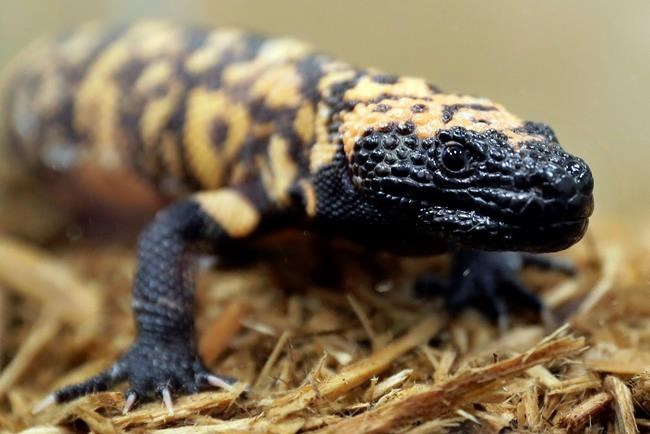
FILE - This Dec. 14, 2018 file photo shows a Gila monster at the Woodland Park Zoo in Seattle. Utah has named the venomous lizard with black and yellow bead-like scales as its state reptile. Republican Gov. Gary Herbert signed a bill into a law last week that adds the Gila monster to the list of state symbols, honoring the lizard among such things as the beehive, the Dutch oven, elk and sea gulls. (AP Photo/Ted S. Warren, File)
Republished April 03, 2019 - 10:34 AM
Original Publication Date April 02, 2019 - 9:16 PM
SALT LAKE CITY - Utah has named a venomous lizard with black and yellow bead-like scales as its state reptile.
Republican Gov. Gary Herbert signed a bill into law last week that adds the Gila monster to the list of state symbols, honouring the lizard among things like the beehive, the Dutch oven, elk and seagulls.
Republican state Rep. Lowry Snow had sponsored the bill after students at Lava Ridge Intermediate School in Santa Clara lobbied the lawmaker. The students pushed for the bill through correspondence and committee testimony.
"I have so much enjoyed these emails from these fourth-graders," Republican state Sen. Todd Weiler said during debate on the matter. "I did not know the Gila monster stored its fat in its tail, and I felt like we had something in common."
The lizard is named after the Gila River, a Colorado River tributary that flows through Arizona and into New Mexico. They are native to areas across the Southwest but are mostly found in parts of Arizona, according to the Utah Division of Wildlife Resources.
In Utah, the lizards can be found in Snow Canyon State Park and in the Red Cliffs Desert Reserve. People are likely to see the monsters during daytime hours in April and May and on warm summer nights.
The monsters eat tortoise and bird eggs as well as small mammals, like baby cottontail rabbits, according to the wildlife agency.
They dine only three or four times a year because they can eat up to 33% of their body weight in a single meal. They mostly stay underground.
Their venom can be deadly in large doses, but it also has medicinal properties, according to the wildlife agency.
News from © The Associated Press, 2019